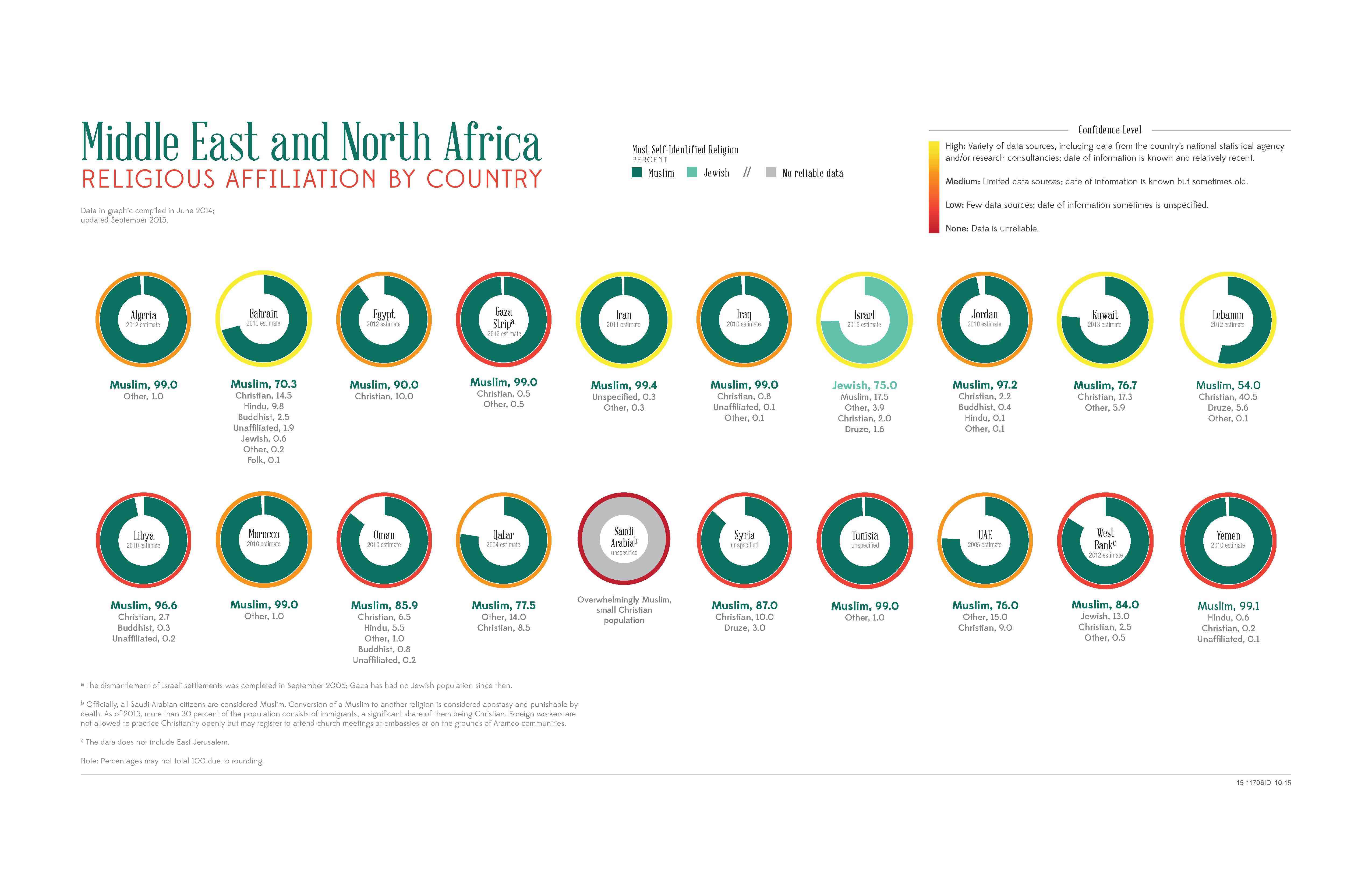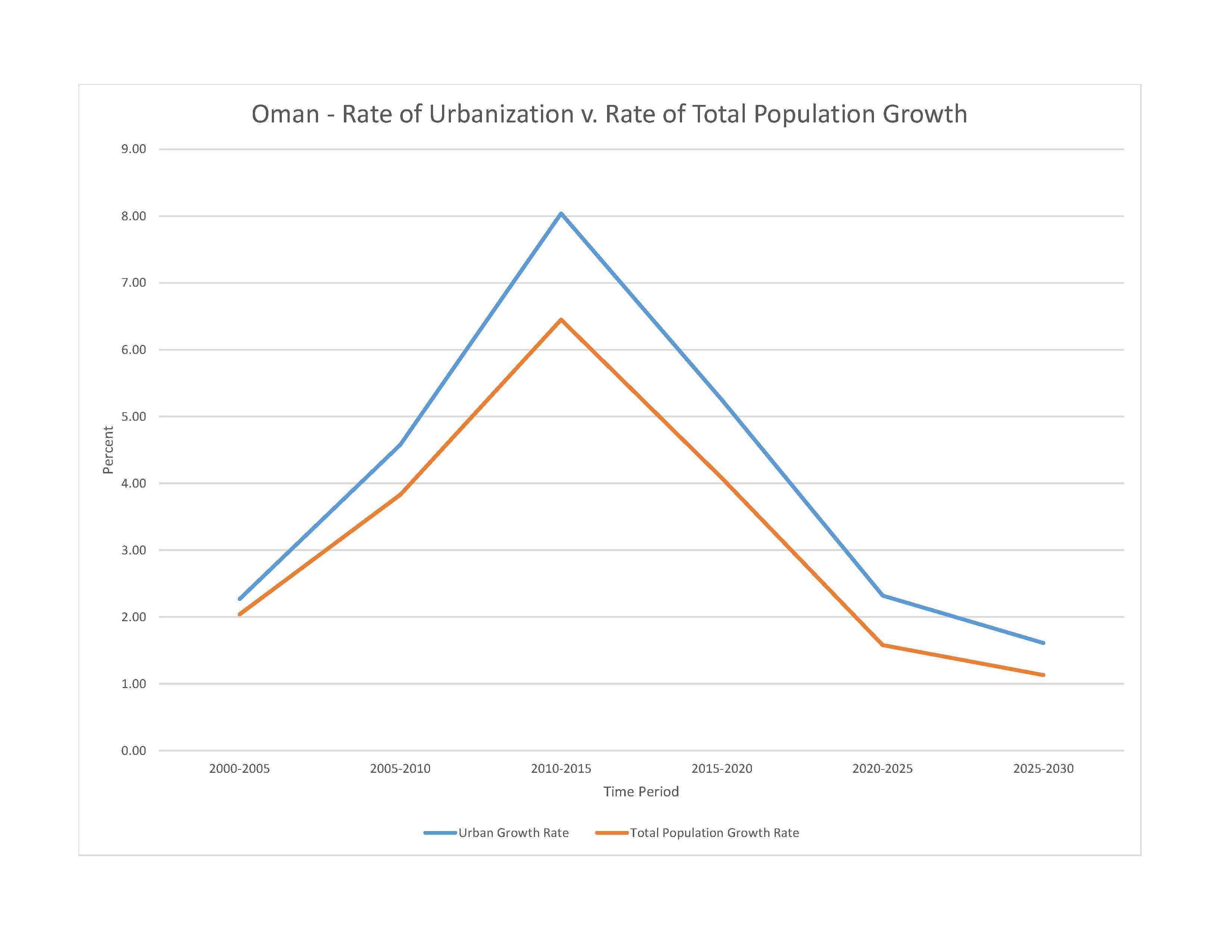
3,833,465 (2023 est.)
note: immigrants make up approximately 46% of the total population (2019)
noun: Omani(s)
adjective: Omani
Arab, Baluchi, South Asian (Indian, Pakistani, Sri Lankan, Bangladeshi), African
Arabic (official), English, Baluchi, Swahili, Urdu, Indian dialects
major-language sample(s):
كتاب حقائق العالم، المصدر الذي لا يمكن الاستغناء عنه للمعلومات الأساسية (Arabic)
The World Factbook, the indispensable source for basic information.
Arabic audio sample:
Muslim 85.9%, Christian 6.4%, Hindu 5.7%, other and unaffiliated 2% (2020 est.)
note: Omani citizens represent approximately 56.4% of the population and are overwhelming Muslim (Ibadhi and Sunni sects each constitute about 45% and Shia about 5%); Christians, Hindus, and Buddhists account for roughly 5% of Omani citizens

0-14 years: 29.88% (male 586,608/female 558,770)
15-64 years: 66.17% (male 1,404,289/female 1,132,250)
65 years and over: 3.95% (2023 est.) (male 70,976/female 80,572)
total dependency ratio: 42
youth dependency ratio: 38
elderly dependency ratio: 4
potential support ratio: 25.2 (2021 est.)
total: 27.1 years (2023 est.)
male: 27.9 years
female: 26 years
1.8% (2023 est.)
21.6 births/1,000 population (2023 est.)
3.2 deaths/1,000 population (2023 est.)
-0.5 migrant(s)/1,000 population (2023 est.)
the vast majority of the population is located in and around the Al Hagar Mountains in the north of the country; another smaller cluster is found around the city of Salalah in the far south; most of the country remains sparsely poplulated
urban population: 88.4% of total population (2023)
rate of urbanization: 2.32% annual rate of change (2020-25 est.)

1.650 million MUSCAT (capital) (2023)
at birth: 1.05 male(s)/female
0-14 years: 1.05 male(s)/female
15-64 years: 1.24 male(s)/female
65 years and over: 0.88 male(s)/female
total population: 1.16 male(s)/female (2023 est.)
17 deaths/100,000 live births (2020 est.)
total: 14.2 deaths/1,000 live births (2023 est.)
male: 15.4 deaths/1,000 live births
female: 12.9 deaths/1,000 live births
total population: 77.2 years (2023 est.)
male: 75.2 years
female: 79.2 years
2.67 children born/woman (2023 est.)
1.3 (2023 est.)
29.7% (2014)
improved: urban: 100% of population
rural: 97.9% of population
total: 99.7% of population
unimproved: urban: 0% of population
rural: 2.1% of population
total: 0.3% of population (2020 est.)
5.3% of GDP (2020)
1.77 physicians/1,000 population (2020)
1.5 beds/1,000 population (2017)
improved: urban: 100% of population
rural: 100% of population
total: 100% of population
unimproved: urban: 0% of population
rural: 0% of population
total: 0% of population (2020 est.)
27% (2016)
total: 0.47 liters of pure alcohol (2019 est.)
beer: 0.17 liters of pure alcohol (2019 est.)
wine: 0.02 liters of pure alcohol (2019 est.)
spirits: 0.29 liters of pure alcohol (2019 est.)
other alcohols: 0 liters of pure alcohol (2019 est.)
total: 8% (2020 est.)
male: 15.5% (2020 est.)
female: 0.4% (2020 est.)
11.2% (2016/17)
56.4% (2023 est.)
5.4% of GDP (2019 est.)
definition: age 15 and over can read and write
total population: 95.7%
male: 97%
female: 92.7% (2018)
total: 15 years
male: 15 years
female: 15 years (2021)
NOTE: The information regarding Oman on this page is re-published from the 2024 World Fact Book of the United States Central Intelligence Agency and other sources. No claims are made regarding the accuracy of Oman 2024 information contained here. All suggestions for corrections of any errors about Oman 2024 should be addressed to the CIA or the source cited on each page.
This page was last modified 04 May 24, Copyright © 2024 ITA all rights reserved.